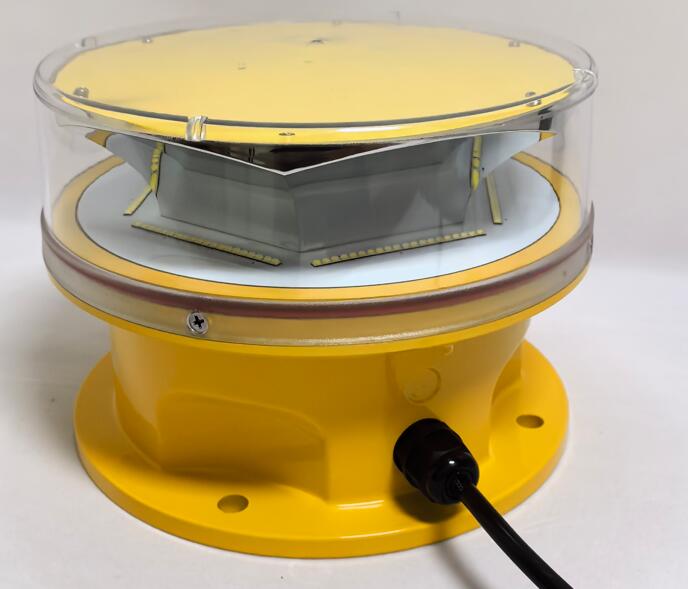Aircraft Warning Beacon: The Guardian of Skyscraper Safety
In our vertically expanding world where skyscrapers pierce clouds and wind turbines stretch toward the heavens, aircraft warning beacons serve as silent guardians of aviation safety. These vital devices provide critical visual warnings to pilots, preventing catastrophic collisions with tall structures. As urban landscapes grow denser and renewable energy projects multiply, the importance of reliable aircraft warning systems has never been greater. This article examines their function, technological evolution, and indispensable role in modern infrastructure.
Why Aircraft Warning Beacons Are Non-Negotiable for Safety
Aviation authorities globally mandate aircraft warning beacons on any structure that could pose a hazard to low-flying aircraft. The consequences of non-compliance are severe - from mid-air collisions to legal liabilities. These beacons perform three essential functions:
Collision Prevention - Making structures visible up to several nautical miles away
Regulatory Compliance - Meeting FAA, ICAO, and local aviation authority requirements

All-Weather Reliability - Operating consistently in fog, rain, or darkness
Types of Aircraft Warning Beacons
Modern systems employ different beacon types based on structure height and location:
1. Red Steady-Burning Beacons
For structures under 150 feet (45m)
Constant illumination for low-rise buildings and cranes
Most economical solution for basic requirements
2. Medium-Intensity Flashing Beacons
For structures 150-500 feet (45-150m)
| aircraft warning beacon |
White or red flashing lights visible for 3-5 miles
Common on telecom towers and urban high-rises
3. High-Intensity Strobe Beacons
For structures exceeding 500 feet (150m)
Powerful white strobes visible up to 20 miles
Used on skyscrapers, wind farms, and broadcast towers
| aircraft warning beacon light |
Cutting-Edge Beacon Technology
Today's aircraft warning beacons incorporate revolutionary features:
LED Conversion - 80% energy savings versus traditional xenon strobes
Dual-Power Systems - Solar with battery backup for uninterrupted operation
Smart Diagnostics - Self-monitoring with automatic failure alerts
Light Pollution Control - Directional lighting that minimizes skyglow
Ice-Resistant Designs - Critical for cold climate installations
Industry-Specific Applications
These life-saving devices protect various sectors:
Urban Construction
Temporary beacons for cranes during building projects
Permanent installations on completed skyscrapers
Renewable Energy
Wind turbine lighting systems
Solar farm marker beacons near flight paths
Transportation Infrastructure
Bridge and antenna tower warnings
Airport perimeter lighting
Overcoming Operational Challenges
While essential, warning beacons present unique challenges:
Maintenance Issues
Difficult access to rooftop installations
Harsh weather degradation
Regulatory Complexities
Varying international standards
Frequent policy updates
Community Concerns
Light pollution complaints
Aesthetic impact on architecture
Innovative solutions like:
Dimmable systems that adjust to ambient conditions
Modular designs for easier servicing
Customizable housings that blend with structures
The Future of Warning Beacon Technology
Emerging advancements promise to revolutionize the industry:
AI-Powered Systems
Predictive maintenance algorithms
Weather-adaptive brightness controls
Enhanced Sustainability
More efficient solar harvesting
Recyclable component designs
Advanced Materials
Self-cleaning lens coatings
Ultra-durable composite housings
Integrated Airspace Systems
Beacon-to-cockpit digital communication
Drone detection compatibility
The humble aircraft warning beacon performs an extraordinary service - standing guard between human engineering ambition and aviation safety. As we continue building taller and flying more frequently, these unblinking sentinels will only grow in importance. The next generation of smart, sustainable beacon technology promises to make our skies safer while reducing environmental impact. For any organization operating tall structures, investing in advanced warning systems isn't just regulatory compliance - it's a moral obligation to protect lives in our shared airspace.
By embracing technological innovation while respecting community and environmental concerns, the aircraft warning beacon industry illuminates the path toward safer urban development and cleaner energy solutions. In our race toward the clouds, these lights ensure we don't lose sight of what matters most - safe passage for all who travel through our increasingly crowded skies.
